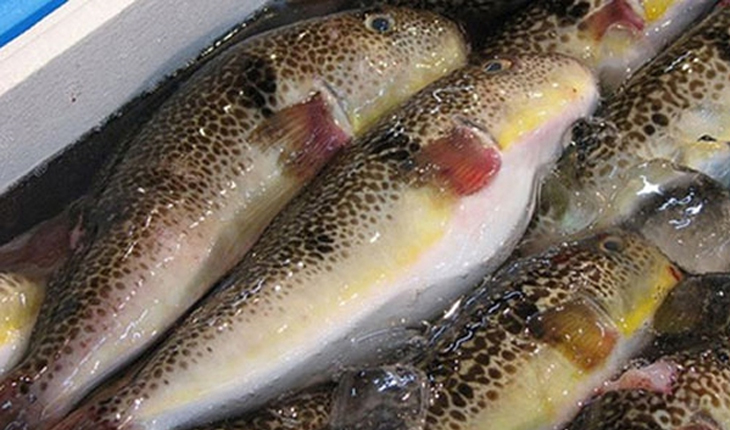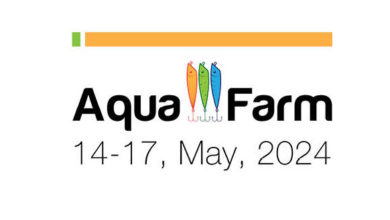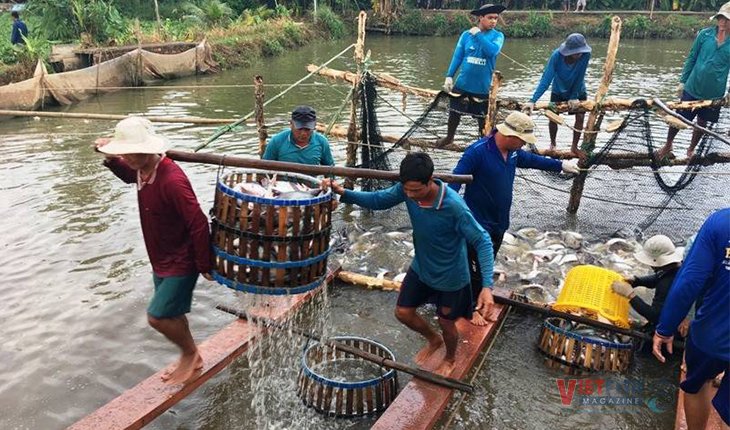Global shrimp production reached 4.086 million tons in 2020; 4.569 million tons in 2021 and production in 2022 is expected to exceed 5 million tons (Chris Chase, 01/2022). However, the rapid intensification of shrimp farming in many Asian countries, especially in countries such as China, Vietnam, Thailand, Indonesia and India, has led to many challenges that pollute the environment and cause outbreaks of dangerous diseases. Dangerous diseases for farmed shrimp today include 1) Acute Hepatopancreatic Necrosis Disease (AHPND); 2) Enterocytozoon Hepatopenaei (EHP) and 3) White Feces Disease (WFD) whose cause is unknown but environmental stress has believed to trigger the disease with involvement of different Vibrios sp. and/or Enterocytozoon Hepatopenaei, especially the Vibrio parahaemolyticus and Enterocytozoon Hepatopenaei.
Shrimp are primitive animals that do not have a specific immune system, so they are very susceptible to sress factors, especially environmental stresses that fluctuate beyond the optimal range such as low dissolved oxygen (dissolved oxygen < 5 mg / L), pH too low or too high (pH < 7.5 or pH > 8.3), alkalinity too low or too high (Alkalinity < 80 mg/L or > 200 mg/L) as well as toxic gases, like Ammonia (NH3) and nitrite (NO2),…… Good feed quality is also an important factor to help promote shrimp health or bad feed making shrimp weaken and be susceptible to disease when poor feed quality causes intestinal disease, loosing feces or the risk of infection with pathogens increases… The shrimp farming industry is therefore looking for and developing many solutions, including 1) Improving the quality of genetic breeding stock; 2) Develop new farming models & solutions to control the quality of input water and during the culture cycles, typically water filtration systems and water treatment with large settling ponds, taking surface water through many intermediate ponds before treating with potassium permanganate & chlorine in ready usage ponds or to develop the recirculation system to reduce water exchange in combination with fish culture such as tilapia or barramundi fish, and other technical solutions using probiotics to eliminate toxic gases in water through different tropic mechanisms, including heterotropic bacteria, autotrophic bacteria, and chemoautotrophic bacteria, namely “Mixotrophic System”. In addition to technical solutions and farming models, the shrimp feed industry is also aiming to produce functional feed lines that promote health, increase stress resistance (anti-stress) or inhibit pathogens… However, the cost of producing functional feed lines from high-quality functional ingredients and additives is a big challenge, but coordinating a reasonable feeding program with a certain percentage/inclusion of functional feed during the day or feeding the functional feed with a certain number of days in the week or month can help farmers in supporting to use the functional feed and this is becoming more and more reasonable and accelerating the trend of producing functional feed for shrimp health and disease control on shrimp farms.
Raw materials & additives used to produce functional feeds are available on the market, but feed mills need to carefully evaluate the quality of ingredients and additives both in terms of health nutrients of the raw materials and additives & technology to produce these ingredients & additives. In order to have a better overview of shrimp health nutrition as well as raw materials and additives used to produce shrimp functional feed, below is a summary of the health nutrients and additives proposed in considering options for the functional shrimp feed production.:
- Peptides & Biopeptides
Peptides & biopeptides: derived from krill and fishmeal protein sources, especially high-grade fishmeal (Peruvian fishmeal, Chilean fishmeal, Danish fishmeal) or from concentrated hydrolyzed proteins (at least 65% protein) or fermented concentrate proteins coming from anaerobic fermentation technology such as fermented high-grade corn protein (MOTIV) or some other concentrated hydrolyzed protein from fish, poultry proteins..High-quality fermented proteins has a lot of soluble protein & biopeptides (peptides with size < 1,000 Da). Biopeptides is very important in improve shrimp and animal health as their different roles in antibacterial, anti-stress, antioxidant as well as improving the immune for the cultured animals.
- Organic acids
Heat-resistant formate organic acid (Potassium diformate) can be used for shrimp feed or natural organic acids such as lactic acid generated from the anaerobic fermentation of proteins is very good for shrimp because of its role in lowering intestinal pH to help inhibit Vibrio sp. or activate the gut enzymes for better feed digestion. Liquid organic acids used in top-dressing form at farms have shown effectiveness in treating shrimp loosing feces, but organic acids suitable for shrimp should be the Butyric acid or Lactic acid while formic, propionic or citric acids are often not highly effective in shrimp if used in a long period.
- Cholesterol & Phospholipids
Shrimp have a high requirement for Cholesterol (minimum 0.12%) & Phospholipids (1.2%-1.5%) to address the molting process and growth because cholesterol and phospholipids are precursors for the production of steroid molting and growth hormones. Deficiency of cholesterol and phospholipids will make shrimp difficult to molt and easy to die during molting proces.
- Nucleotides
Nucleotides is excellent for shrimp anti-stress as well as playing in attractant and palatability for shrimp feeds; therefore, it has often considered to add in the health -top-dress products.
- Carotenoids
Carotenoids (astaxanthin, xanthophyll,..) is not only playing in pigmentation but also very strong in antioxidant and anti-stress roles.
- 1,3-1,6 βglucan and similar Oligosaccharides (MOS, Steroid Saponin,…).
This group is rich in yeast extracts, marine algae or fungus and or fungal cell walls that enhance and activate the natural immune system, in addition to acting as prebiotics for the beneficial intestine flora.
- Phytogenics
Natural extracts from plant sources with strong antioxidant, anti-inflammatory, antibacterial properties are potential solutions in replacing or minimizing antibiotics for culture animals. However, we need to consider the production technology of these natural extracts of herbs and would be good with nanotechnology can produce these additives effectively.
- Probiotics/Enzymes
Probiotics & enzymes are widely used in ponds to control water quality by reducing the amount of ammonia in ponds. Probiotics and enzymes play a big role in the digestive health and gut health of cultured animals. In livestock industry, it is also widely used due to low cooking temperatures, but the shrimp and fish feed industry the use of probiotics and enzymes is not applicable due to high cooking temperatures. Some spore-producing strains of Bacillus sp. can be used in pelleted shrimp feed or the development of nebulizers/sprayers that can apply enzymes to the post-extrusion process for the extruded feeds.
- Vitamin and minerals
Minerals play an important role not only to build body tissue but also to help shrimp harden their shells quickly after molting, in addition to helping shrimp stay healthy and shiny. Shrimp are primitive animals with a simple digestive system and very fast digestion time, so it is necessary to use organic minerals to help shrimp absorbing better the minerals. Vitamins also play a large role in animal health, including the anti-stress and immune boosting, especially Vitamins C, E and D3.
In fact, it is difficult to have a single ingredient or additive that can solve the challenged issues of the farmed shrimp but combining high-quality and functional ingredients that consists of high levels of health nutrients together with specific additives will be the best solution in considering the production of functional shrimp feed. MOTIV is high-quality and functional fermented corn protein concentrate which consists of good soluble protein and biopeptides, organic acids and carotenoids; therefore, it can be an excellent product to combine with other high-grade protein sources such as Krill meal and/or functional additives, such as nucleotides, taurine, yeast cell extracts (consists of 1.3-1.6 βglucan), vitamins C, E, D3 and/or the phytogenics produced by nanotechnology will be a good solution for anti-stress and anti-bacteria feeds for the farmed shrimp.
Nguyen Duy Hoa, PhD.
Global Technical Director
Empyreal and MOTIV products, Cargill Inc.






